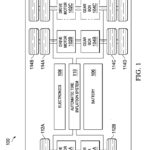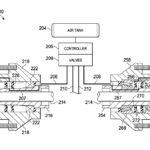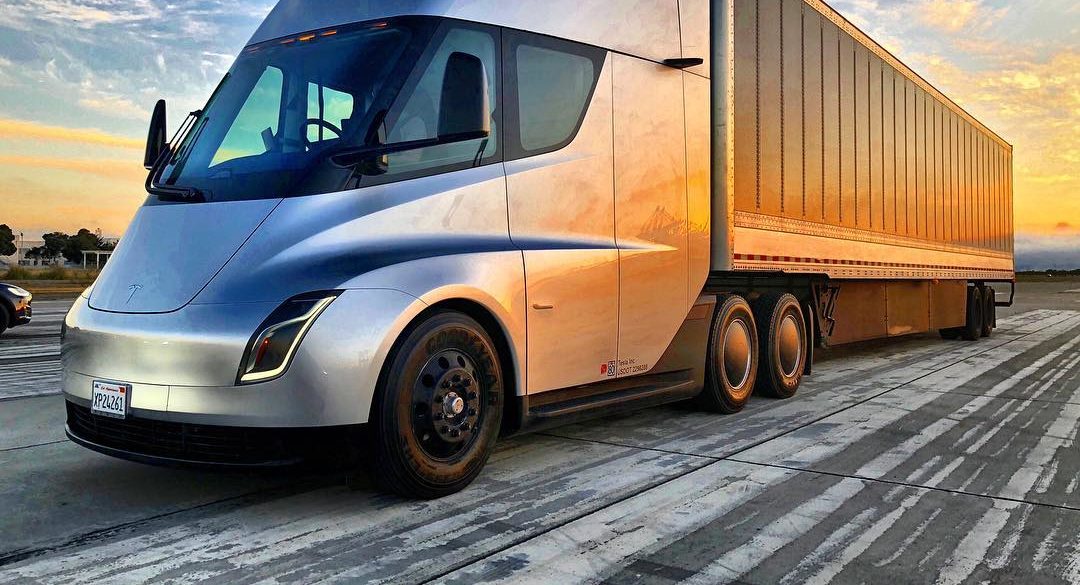
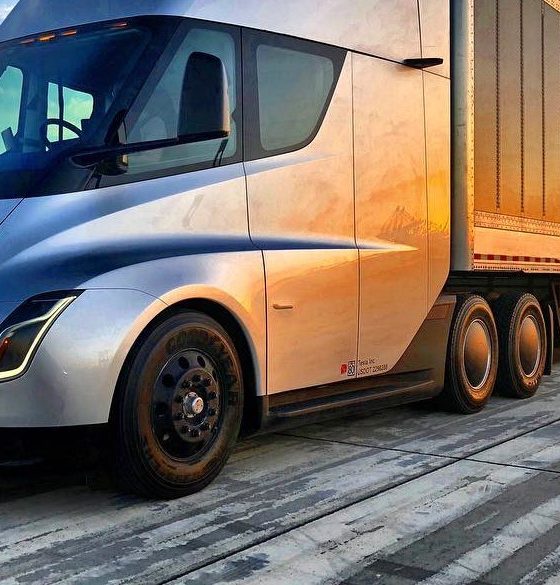
News
Tesla Semi tire inflation patent paves way for pickup truck, Model Y & X’s off-road abilities
During Tesla’s third-quarter earnings call, Elon Musk noted that the company continues to make headway on its future vehicles. Musk noted that he had already approved the production of the Model Y prototype, while pointing out that the company is making progress on the next-generation Roadster and the Tesla Semi. Musk reiterated his enthusiasm about the Tesla pickup truck as well, which he admits is a vehicle he is most excited about.
Some of the improvements to the Tesla Semi appear to have been teased in one of the company’s recently-published patent applications. The patent, which was published on October 18, 2018, and titled “Automatic Tire Inflation System with Thru-Hub Air Feed,” outlined a system enabling Tesla’s vehicles to inflate or deflate their tires as necessary. While several vehicles today already have Automatic Tire Inflation Systems, Tesla’s patent application notes that conventional ATIS have much room for improvement.
“These prior solutions had a number of shortcomings. With some prior art techniques, air was fed through hollow drive axles to a fitting located on the end thereof. The fitting was then coupled to the air inlets of the tires. To couple the air into the hollow drive axles, a rotatingly attached fitting coupled air from an air storage to the inside of the hollow axles. This fitting was subject to leakage of contaminants. These contaminants interfered with the operation of the ATIS and eventually caused the ATIS to fail.”
Diagrams of Tesla’s Automatic Tire Inflation System. [Credit: US Patent Office]
Tesla’s ATIS patent involves a system that features valves, a rotary air seal, and bearings, to avoid contamination. With such a system in place, Tesla notes that the wheels of its vehicles would likely last longer, and tires would require even less maintenance.
“In order to overcome the shortcomings described above among other shortcomings, an Automatic Tire Inflation System (ATIS) for use with a vehicle according to a first described embodiment includes a controller, valves controlled by the controller, the valves having an air supply inlet, and a plurality of air outlets. Further, the ATIS includes, for at least one drive axle having inner bearings and outer bearings, a channel formed in a spindle, first hosing coupling a valve of the valves controlled by the controller to the channel formed in the spindle, a channel formed in a hub, a rotary air seal residing between the inner bearings and the outer bearings and coupling the channel formed in the spindle to the channel formed in the hub, and second hosing coupling the channel formed in the hub to at least one wheel.
“Thus, as compared to the prior ATIS systems, the ATIS of the first embodiment, significantly reduces contamination in the ATIS air stream. Reduction in contamination extends the life of the ATIS, extends spindle life, extends hub life, and extends serviced wheel/tire lives and extends maintenance intervals.”
While the diagrams in the patent application suggest that Tesla’s upcoming ATIS would be used for the Semi, the applications for the automatic tire inflation system for the company’s other, upcoming vehicles are notable. Having the capability to automatically inflate tires depending on the terrain, after all, would allow Tesla to start giving its vehicles some form of off-road capability. Under-inflated tires are key to off-road driving, since they are capable of flexing more, allowing vehicles to “crawl” over rocks and other sharp, irregular terrain. Under-inflated tires also have a wider contact path, allowing vehicles to gain more traction in terrain like deep sand or soft snow.
For now, Tesla’s vehicles are optimized for city and interstate driving, and while there are accounts of the Model X being taken off-road (EV YouTuber Bjorn Nyland’s extreme driving test sessions come to mind), the company’s electric cars are yet to have features that are specifically geared towards off-road driving. With an ATIS system, Tesla’s upcoming vehicles such as the Tesla pickup truck, and even the company’s SUVs like the Model Y and a future iteration of the Model X, could have the ability to explore areas beyond paved roads. Such capabilities would likely be invaluable, considering that legendary vehicles like the Ford F-150 and the Chevy Blazer established their legacies by proving themselves capable in areas where neither asphalt nor concrete is present.
Tesla’s full patent for its Automatic Tire Inflation system could be accessed here.

News
Tesla begins Holiday Update rollout with some surprise features
On Monday, just a few days after Tesla first announced the Holiday Update, people started reporting that it was being deployed to owners.

Tesla has started the rollout of the 2025 Holiday Update, as several owners reported it had arrived in their cars via a software update.
Tesla’s Holiday Update is rolling out as Software Version 2025.44.25.1, and includes several new features. We did an extensive breakdown of what was included in another article, but we’ll list the new additions below:
- Grok with Navigation Commands (Beta) – Grok will now add and edit destinations.
- Tesla Photobooth – Take pictures inside your car using the cabin-facing camera
- Dog Mode Live Activity – Check on your four-legged friend on your phone through periodic snapshots taken of the cabin
- Dashcam Viewer Update – Includes new metrics, like steering wheel angle, speed, and more
- Santa Mode – New graphics, trees, and a lock chime
- Light Show Update – Addition of Jingle Rush light show
- Custom Wraps and License Plates – Colorizer now allows you to customize your vehicle even further, with custom patterns, license plates, and tint
- Navigation Improvements – Easier layout and setup
- Supercharger Site Map – Starting at 18 pilot locations, a 3D view of the Supercharger you’re visiting will be available
- Automatic Carpool Lane Routing – Navigation will utilize carpool lanes if enabled
- Phone Left Behind Chime – Your car will now tell you if you left a phone inside
- Charge Limit Per Location – Set a charge limit for each location
- ISS Docking Simulator – New game
- Additional Improvements – Turn off wireless charging pad, Spotify improvements, Rainbow Rave Cave, Lock Sound TRON addition
On Monday, just a few days after Tesla first announced the Holiday Update, people started reporting that it was being deployed to owners.
We noticed a new Tesla software update 2025.44.25.1 on a Model Y AWD LR (2022) in Florida, United States. View the rollout of this update here: https://t.co/rPqISQaNkM
— Teslascope (@teslascope) December 8, 2025
It seems the release is a bit of an apology to a particular group, as it has only made its way to Hardware 3 vehicles, particularly the ones using the AMD Ryzen chip.
Tesla has excluded FSD-purchased and subscribed vehicles that are utilizing Hardware 3, so it seems there is a strategy to this limited rollout.
Two Surprise Additions
Tesla has added two additional features with the Holiday Update, which include a new Storage Space for Dashcam feature that shows how much space you have used and remaining on your USB drive.
Additionally, Tesla gamified Supercharging with a new “Charging Passport” feature, which we reported on earlier today.
News
Tesla announces major milestone at Gigafactory Shanghai
First deliveries started in December 2019, with the first units being given to employees. By the end of 2020, the plant was building cars at a run rate of around 150,000 vehicles annually.
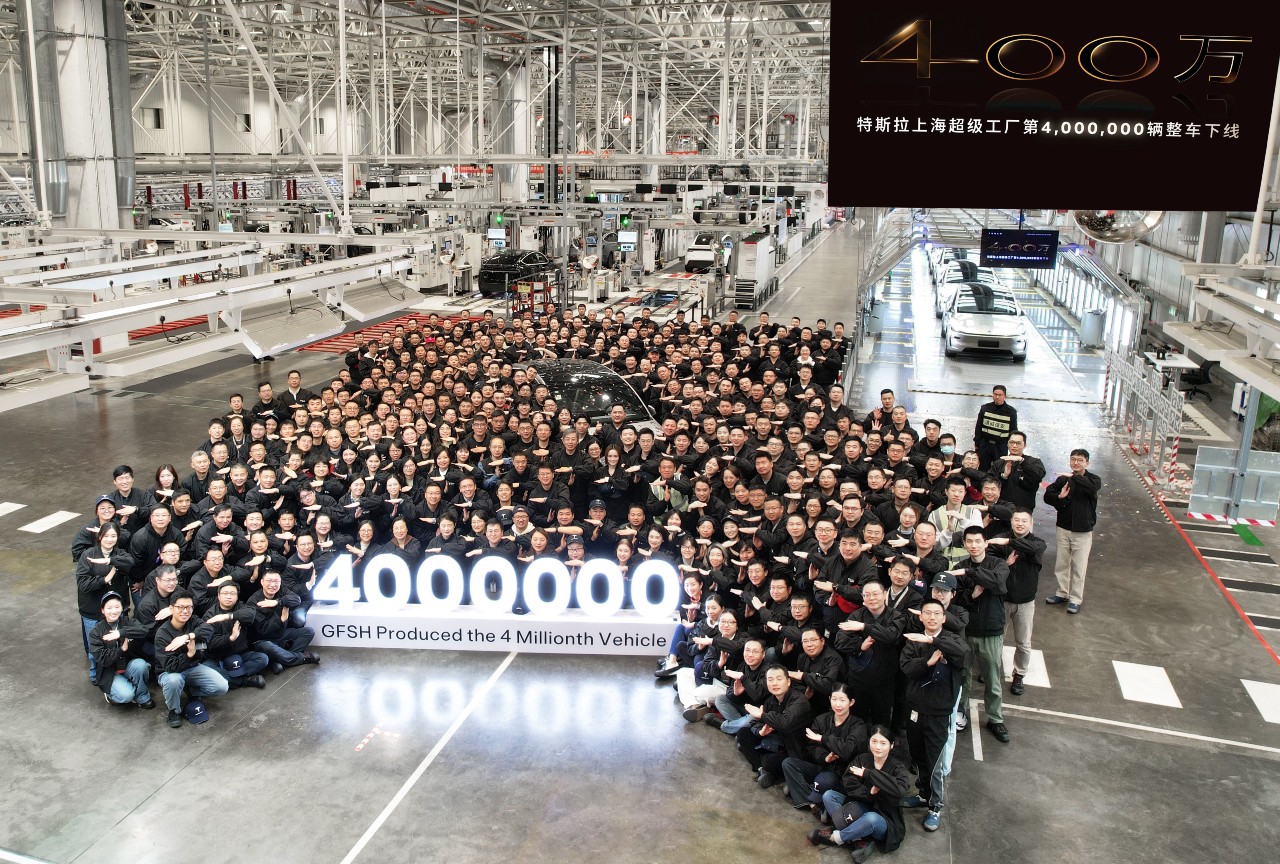
Tesla has announced a major milestone at its Chinese manufacturing facility, Gigafactory Shanghai, confirming on Monday that it had built its four millionth vehicle.
Tesla Gigafactory Shanghai first started building cars back in October 2019 with Model 3 assembly, just ten months after the company broke ground on the plant’s 86-hectare piece of land.
First deliveries started in December 2019, with the first units being given to employees. By the end of 2020, the plant was building cars at a run rate of around 150,000 vehicles annually. Production continued to ramp up, and by September 2023, less than three years after it started building Tesla’s EVs, it had built its two millionth vehicle.
Fast forward to December 2025, and Tesla has confirmed that four million cars have rolled off of production lines at the plant, a major milestone in the six short years it has been active:
Produced our 4 millionth vehicle at Gigafactory Shanghai🎉
Thanks to all our owners and supporters❤️ pic.twitter.com/DayVXUr220— Tesla Asia (@Tesla_Asia) December 8, 2025
The capacity at Giga Shanghai is exceeding 950,000 vehicles per year, and this year, the company has delivered 675,000 cars through the first three quarters. It is also the only plant to manufacture the Model Y L, a longer wheel-based configuration of the all-electric crossover that is exclusive to the Chinese market.
Gigafactory Shanghai’s four million cars have not all stayed within the domestic market, either. For a considerable period, the factory was exporting a significant portion of its monthly production to Europe, helping Gigafactory Berlin supplement some Model Y volume and all of its Model 3 deliveries. This is due to the Berlin plant’s exclusive production plans for the Model 3.
The site is one of the most crucial in the company’s global plans, and Gigafactory Shanghai’s incredible pace, which has led to four million production units in just about six years. It’s fair to say that it won’t be long until we’re seeing Tesla celebrate the plant’s five millionth vehicle produced, which should happen sometime late next year or in early 2027, based on its current manufacturing pace.
The company also builds the Megapack on the property in an adjacent Megafactory.
News
Tesla gamifies Supercharging with new ‘Charging Passport’
It will also include things like badges for special charging spots, among other metrics that will show all of the different places people have traveled to plug in for range.
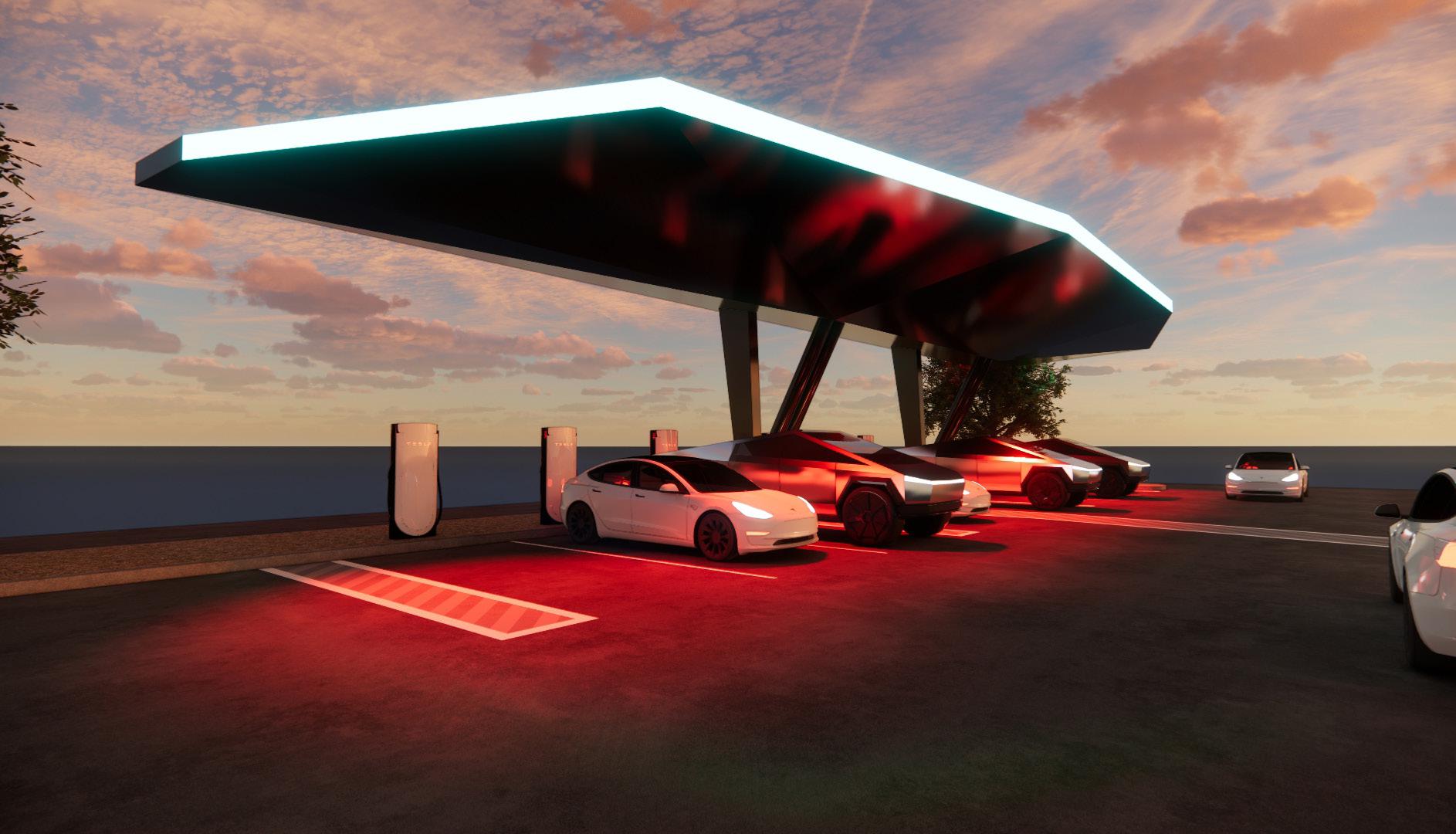
Tesla is gamifying its Supercharging experience by offering a new “Charging Passport,” hoping to add a new layer to the ownership experience.
While it is not part of the Holiday Update, it is rolling out around the same time and offers a handful of cool new features.
Tesla’s Charging Passport will be available within the smartphone app and will give a yearly summary of your charging experience, helping encapsulate your travel for that year.
It will also include things like badges for special charging spots, among other metrics that will show all of the different places people have traveled to plug in for range.
Tesla has just introduced “Charging Passport,” a new yearly summary of your charging.
• Charging badges: Iconic Charging badge (for visiting places like the Tesla Diner, Oasis Supercharger, etc), Explorer badge, green saver badge, etc.
• Total unique Superchargers visited
•… pic.twitter.com/c1DHTWXpj7— Sawyer Merritt (@SawyerMerritt) December 8, 2025
Tesla will include the following metrics within the new Charging Passport option within the Tesla app:
- Charging badges: Iconic charging badges for visiting places like the Tesla Diner, Oasis Supercharger, etc., Explorer Badge, and more
- Total Unique Superchargers Visited
- Total Charging Sessions
- Total Miles Added during Charging Sessions
- Top Charging Day
- Longest Trip
- Favorite Charging Locations
This will give people a unique way to see their travels throughout the year, and although it is not necessarily something that is needed or adds any genuine value, it is something that many owners will like to look back on. After all, things like Spotify Wrapped and Apple Music Replay have been a great way for people to see what music they listened to throughout the year.
This is essentially Tesla’s version of that.
With a handful of unique Superchargers already active, Tesla is also building some new ones, like a UFO-inspired location in New Mexico, near Roswell.
Tesla is building a new UFO-inspired Supercharger in the heart of Alien country
